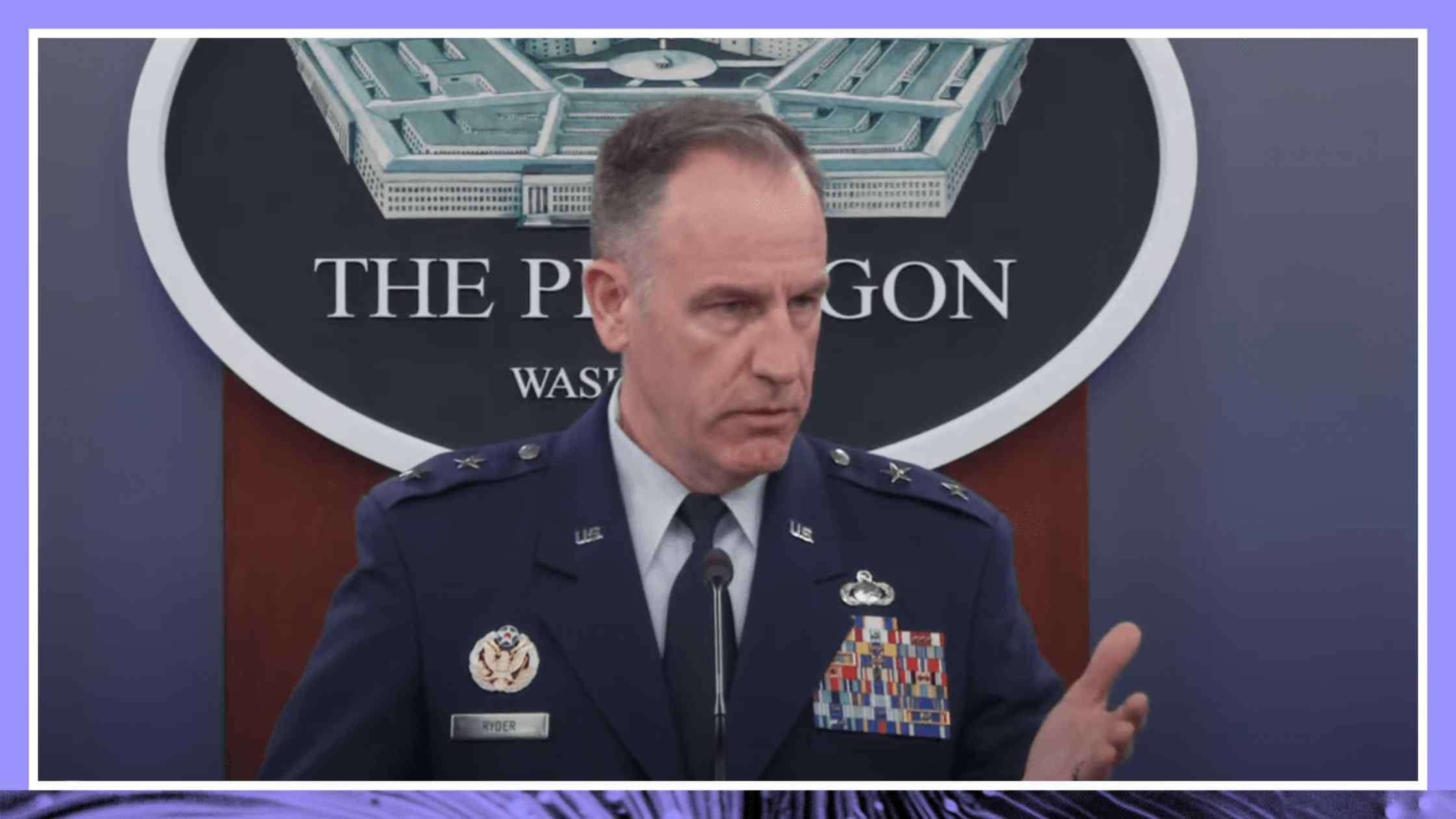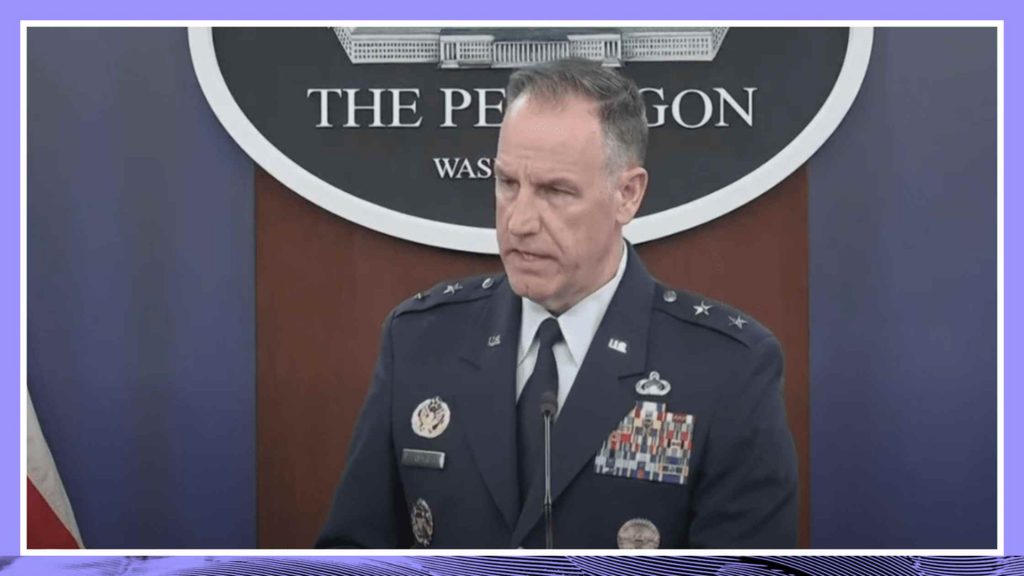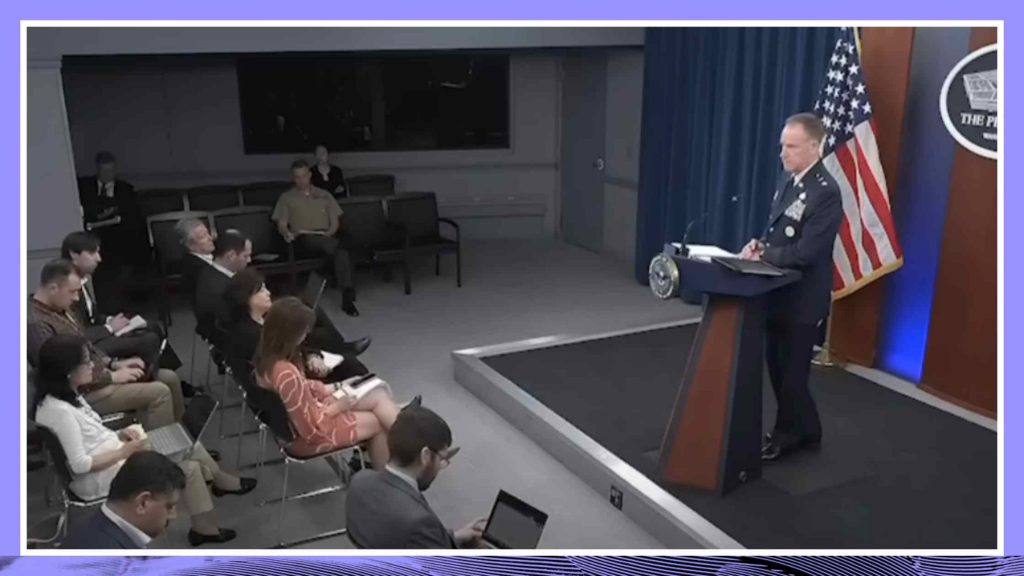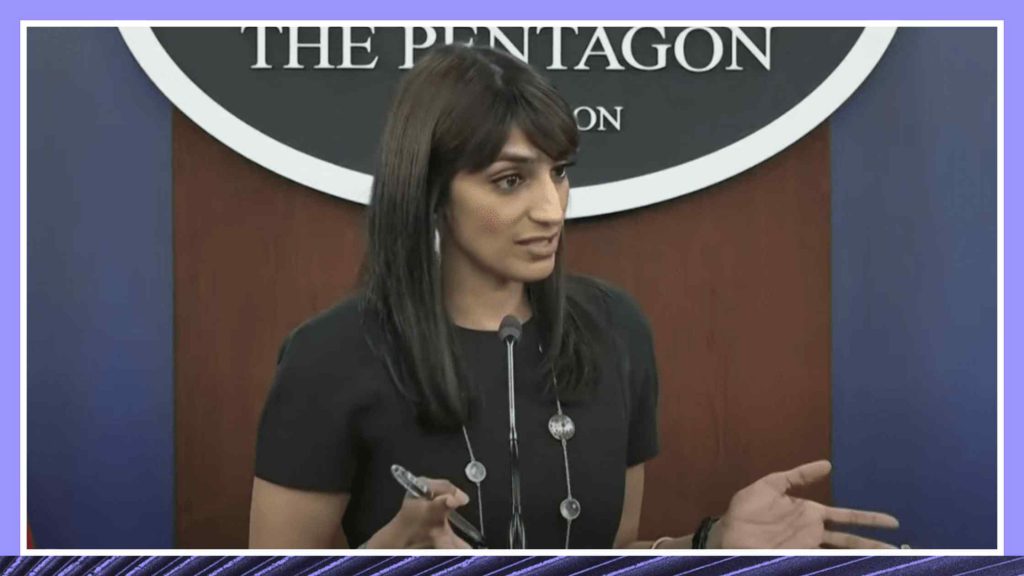Mar 13, 2024
Pentagon Briefing on 3/12/24

Pentagon to send $300m in weapons for Ukraine even as it lacks funds to replenish stockpile. Read the transcript here.
Major General Pat Ryder (00:00):
All right. Well, good afternoon, everyone. Just a couple things to pass along and then we’ll get right to your questions.
(00:12)
Today, the Department of Defense deployed four US Army vessels from Joint Base Langley-Eustis to the Eastern Mediterranean in support of humanitarian assistance operations in Gaza and the mission to build a temporary pier.
(00:26)
The US Army Vessel SP4 James A. Loux, US Army Vessel Monterrey, US Army Vessel Matamoros, and US Army Vessel Wilson Wharf from the 7th Transportation Brigade Expeditionary all departed earlier today, carrying the equipment and supplies needed to support this mission.
(00:45)
Once in theater, these vessels and their crews will establish a roll-on/roll-off pier capability that allows ship-to-shore humanitarian assistance to the people of Gaza. We expect the pier to be fully operational in approximately 60 days, which will be able to facilitate the delivery of up to two million meals daily.
(01:05)
Also on the humanitarian assistance front, this morning, US Central Command and the Royal Jordanian Air Force conducted another combined airdrop into Northern Gaza, where US Air Force C-130s dropped over 5,280 pounds of food, including rice, flour, pasta, and canned food.
(01:22)
Since March 2nd, US Central Command has conducted eight humanitarian assistance airdrops into Gaza to provide essential relief to civilians affected by the ongoing conflict. C-130s and their air crews have dropped over 204,000 meals, 48,000 bottles of water and more than 5,000 pounds of food items.
(01:42)
Separately, today, the Department of Defense announced additional security assistance via the presidential drawdown authority as an extraordinary measure to address some of Ukraine’s most pressing security and defense needs.
(01:54)
This package is the 55th tranche of assistance and is valued at up to $300 million and includes capabilities to support Ukraine’s immediate air defense, artillery, and anti-tank requirements. The capabilities in this announcement include Stinger anti-aircraft missiles, additional ammunition for HIMARS, 155 millimeter artillery rounds, including high-explosive and dual-purpose improved cluster munition rounds, 105 millimeter artillery rounds, AT4 anti-armor systems, additional rounds of small arms ammunition, demolitions munitions for obstacle clearing, spare parts maintenance, and other ancillary equipment.
(02:33)
Now, to be clear, we were able to provide this PDA due to negotiated savings on contracts to replace equipment from previous drawdowns for Ukraine. As a result of these cost savings, we were able to authorize a new PDA package for Ukraine today without additional significant impacts to US military readiness.
(02:52)
But this does not change the fact that we urgently need Congress to pass DOD supplemental request. Today’s PDA package, while providing urgent capabilities to Ukraine’s forces, is nowhere near enough, and the only way to meet Ukraine’s battlefield needs is for Congress to swiftly pass the supplemental.
(03:09)
With that, I’ll be glad to take your questions. Start with AP, Lita Baldor, on the phone I believe.
Lita Baldor (03:16):
Hi, Pat. Yes, thank you. Can you just do quick follow-ups on what you sort of announced. Is there a location yet for where this new pier is going to be in Gaza? And is the US participating in any way in any of the other currently ongoing Marine vessel aid deliveries to Gaza?
(03:44)
And then I have a question on the aid, but if you want to do those two first.
Major General Pat Ryder (03:47):
Yeah, thanks, Lita. So in terms of the specific location of the pier, I don’t have that to provide to you. For OPSEC, I don’t think we’re going to provide that in advance, but of course as the pier starts to become constructed, we will be sure to obviously keep you in the loop on that.
(04:06)
In terms of the ongoing delivery of aid via the sea that I think you’ve seen in the press, to my knowledge, there is no DOD participation in that other than the broader discussion of how we can compliment ongoing international efforts to ensure that aid gets into Gaza.
Lita Baldor (04:28):
Secondly, so on the aid, I think a lot of people are a little confused about the Pentagon, for the second time, finding money, like you’re finding quarters in the couch cushions. So can you explain, initially we were told several months ago that the military had not anticipated the cost of some of the replacement, so some of the replacement was more than what they originally budgeted. So the military or the Pentagon is in the hole. Now we’re told in some cases they thought that it was going to cost more than it actually costs. So it’s kind of contradictory. Do you think you’re starting to lose credibility on this issue?
Major General Pat Ryder (05:19):
No, not at all, Lita. And to explain, we’re talking about two different things here. One, there’s the authorization to expend funds to buy equipment for Ukraine. And then there’s the replenishment funds. And of course, we’re out of replenishment funds.
(05:39)
And so what you heard the White House announce earlier today is when we sent Ukraine weapons last year, the DOD negotiated contracts to replenish those weapons into US stockpiles. And because of those negotiations, we budgeted the full amount of appropriated funds for those contracts. But because of those negotiations, those contracts came in under budget.
(06:08)
And so we have a modest amount of funding available, and this happens from time to time, but of course, it’s not something you can plan for. You can’t plan for budget savings on contracts.
(06:21)
And so as I highlighted on the top, we’re able to use these cost savings to make up this modest amount of new security assistance available right now without significantly impacting military readiness. Because of the situation in Ukraine, obviously they are in an existential fight, they have an urgent need for help, so this is a way that we can provide a small amount of assistance urgently right now, but as I also highlighted, it in no way changes the need for a supplemental to fully fund and be able to provide Ukraine with the kinds of capabilities they need to defend their country and sustain this fight.
(07:03)
Thank you. Let me go into the room here. Oren?
Oren (07:06):
Follow-up question on the aid to Ukraine. Presumably the 300 million wasn’t found all at once, it built up to that point. Why wait until it was at this point instead of announcing half that, 150 million weeks ago, as you were already warning the situation was dire?
Major General Pat Ryder (07:21):
Yeah, so a couple of things. So this covers multiple contracts. And as I understand it, as those negotiations came to conclusion, it’s only been in the last couple of weeks that we’ve been able to identify the full amount that could be made available to do this. And so of course that’s why we’re announcing it now because of the urgent need to be able to provide what we can, again recognizing the fact that at the end of the day, what we really need is the supplemental.
(07:48)
Thank you. Lara.
Lara (07:49):
Thank you. Two questions. First of all, since you were able to cobble together this amount of cost savings, are there additional potential cost savings you’re looking at for other contracts to be able to send additional aid to Ukraine?
(08:05)
And then I have a follow-up.
Major General Pat Ryder (08:07):
So the short answer is no. Again, as I mentioned, you can’t necessarily plan for budget savings. It’s not like you can say, “well, because I’m buying bulk, I can assume that I’m going to get this amount.” And so it’s not a sustainable way to support Ukraine for the long-term, which is again why we really need this supplemental passed.
Lara (08:26):
And then I think you mentioned in your initial readout that you’re sending DPICMS, additional DPICMS. Can you say how many you’re sending? Is this the second or third time that you’re sending a tranche of DPICMS? And what is the dud rate of the DPICMS that you’re sending?
Major General Pat Ryder (08:41):
Yeah, so no, I can’t provide numbers for operational security reasons, Lara. I’d point you back to our previous statements on DPICMS. I don’t have in front of me the number of announcements we’ve made. As you highlight, we have provided them in the past. So I’d refer you back to those.
Lara (08:59):
On the dud rate?
Major General Pat Ryder (08:59):
Yeah, I don’t have any information.
Lara (08:59):
Is it higher than [inaudible 00:09:00]?
Major General Pat Ryder (09:00):
I don’t have any information to pass on that. Tom.
Tom (09:02):
Thanks, General. Just one clarification on the aid to Gaza, and then a question on Ukraine. So you said on Friday it was going to be 60 days from Friday, and then today, you just said it’s going to be 60 days. So is it 60 days from today or is it 60 days from last Friday?
Major General Pat Ryder (09:16):
60 days-ish.
Tom (09:18):
From last Friday-ish?
Major General Pat Ryder (09:18):
Yeah. So within 60 days. So count them from the day that we made the announcement, but 60 days that they’ll be operational.
Tom (09:28):
Thank you. And then on the Ukraine aid, how soon will the artillery that you described, the artillery rounds actually get to the battlefield? And do you see it as shifting the needle much for Ukraine?
Major General Pat Ryder (09:42):
So a couple of things. I’m not going to provide you with a specific date that this aid will arrive, other than to say we’ve been doing this for a while. US Transportation Command, working with the Security Assistance Group-Ukraine, has processes in place to ensure that this aid can be delivered as quickly as possible. So it’s going to be fast.
(10:03)
And in terms of the impact on Ukraine, it will give them some much needed capability that will likely last in the weeks timeframe, but nowhere even close to what they need to be able to continue to sustain this fight, which is why we’ll continue to work very closely with Congress to get the funding that we need to be able to support Ukraine in the way they need to be supported.
(10:25)
Thank you. Sir?
Speaker 6 (10:26):
Thank you, General. Do you have any updates on the HMC meetings with the Iraqi government? Have you got any understanding with them about the future presence of the US forces in Iraq?
Major General Pat Ryder (10:35):
Sure. I really don’t have anything substantive to provide at this point in terms of updates. As you highlight, the Higher Military Commission meetings do continue. And so certainly as we have additional information to provide on the status of those, we’ll make that available.
Speaker 6 (10:49):
Based on the fiscal year budget that you published yesterday, there’s an increase of the amount that funded to the Iraqi government and also to the Kurdish Peshmerga. Does that mean that you’re going to stay for the whole year in 2025, despite the outcome, the results of that HMC meetings? And why there’s an increase of that funds?
Major General Pat Ryder (11:08):
Yeah, again, I’m not going to get ahead of the outcomes of the HMC. As we have updates to provide, we certainly will. As it relates to Iraq, I don’t have the budget right in front of me, so I don’t want to speak to specific budget line items, other than to say we value Iraq as a partner, we’re longstanding partners, and when it comes to supporting Iraq and security assistance, those are things that we obviously look at. But beyond that, I’m not going to have anything further.
Speaker 6 (11:37):
… not to stay in 2025?
Major General Pat Ryder (11:39):
Like I said, I’m not going to get ahead of the HMC discussions. I don’t have anything right now. You’re asking me to speculate on the future. We obviously have a longstanding bilateral security relationship with Iraq, but just leave it at that.
(11:54)
Let me go to the phone here real quick. Jeff Schogol, Task & Purpose.
Jeff Schogol (11:59):
Thank you very much. Are there any ATACMS in this security package? Thank you.
Major General Pat Ryder (12:04):
Yeah, thanks Jeff. Jeff, I don’t have anything to announce on ATACMS. Again, as I highlighted in the top there, what this package does contain are critical munitions to include additional ammunition for HIMARS, the 155 millimeter rounds, which Ukraine obviously desperately needs right now. But nothing to announce on ATACMS.
(12:28)
Let me go here. Patrick Tucker, Defense One.
Patrick Tucker (12:32):
Thanks. That was my question. But I guess I’d follow up with, given the current state of the frontline and what officials have said about the current state of Ukrainian artillery and supplies and Russian supplies, is there any urgency in maybe getting them something different like ATACMS, or is there any discussion about different packages that can go now that perhaps wouldn’t have gone before when the battlefield looked a little bit more favorable to Ukraine?
Major General Pat Ryder (12:59):
Yeah, thanks, Pat. So again, what we’re announcing today is what we’re able to provide unexpectedly, in the sense that we were able to put these funds together to get them these critical capabilities now.
(13:17)
What we really need is the supplemental approved so that we can provide the kinds of capabilities they require longterm.
(13:25)
Again, nothing to announce today as it relates to ATACMS, but again, going forward, we’ll certainly keep you updated on any developments.
(13:36)
Sir.
Speaker 9 (13:38):
Thank you, General. So you mentioned it was about 60 days to construct the pier to deliver the aid. My question is why are we not using Ashdod pier? It’s a pier roughly 30 kilometers north of Gaza in Israel, which would seem to be an easier task just to use an existing pier rather than create a new one?
Major General Pat Ryder (13:55):
Yeah, so this is the mission the Department of Defense has been given. It’s a capability that we have. As I highlighted, it will enable upwards of two million meals to be delivered per day. But to your point, this is just part of a bigger effort, an international effort to get aid into Gaza.
(14:14)
And so I am aware that there are other efforts. As for that specific facility, I don’t have anything to provide on that. But again, in addition to our maritime efforts, the airdrops, and then USAID working with partners in the region to open and expand the land routes, we will continue to do our part as the Department of Defense, again, cognizant of the fact that this is not just us. There’s a much broader effort.
(14:43)
Thank you.
Speaker 9 (14:44):
So are we not using that pier because Israel’s not letting us use that pier?
Major General Pat Ryder (14:48):
I don’t think Israel said we can or can’t. The Department of Defense has been given a mission to provide this capability. It’s something that we have the ability to do, and so it’s something that we’re going to do.
(14:58)
Let me go to Luis.
Luis (15:00):
General, who initiated this review of the assessment of looking back at the readjustment of costs that is being announced today as part of this PDA? And there’s been some reporting that it could go as high as 400 million. Does that mean that there is an additional a hundred million that you’re sitting on, or is that just preliminary information?
Major General Pat Ryder (15:22):
Yeah, so as I understand it, Luis, this is part of the process of accounting, is when any of the services are provided with funding to do replenishment, they negotiate those contracts. It’s not an unprecedented thing to come back with cost savings and then you turn those funds back over to the department to be put into the broader pool.
(15:44)
So that’s just the course of doing business. And as I highlighted, because this was related to multiple contracts, as it became clear that there were going to be these funds available, and over the last couple of weeks as we were able to determine how much could be available with confidence, that was the decision to be made. And as I highlighted, I don’t anticipate right now that we’re going to be able to do future PDAs like this, but certainly not in a sustainable way.
Luis (16:14):
So this was not initiated as a top-down initiative, let’s say, from the secretary saying, look for anything possible, any financing possible that could allow for the replenishment-
Major General Pat Ryder (16:26):
As I understand it, as the services, and they look at those things, it becomes clear, hey, there’s additional funding here, we’ll put it back in the pot. How could we use that in a way that supports Ukraine in the near term?
(16:42)
Let me go back to the phone here. Chris Gordon, Air & Space?
Chris Gordon (16:47):
Thanks, Pat. So now that you’ve found these funds, is there a renewed push to look around for more savings, to find more money since it is possible? Is there any prospect of savings among the other services, not just the Army?
Major General Pat Ryder (17:02):
Yeah, again, Chris, as I highlighted, this is not a sustainable way to support Ukraine. And so this, in a lot of ways, is, as I understand it, a one-time good deal right now. But we’re going to continue to work closely with Congress to try to get the funding that we need, to the broader strategic point of they need to win this fight. And it matters because not only is it important for Ukraine, but it matters for international security to include United States security if Russia were able to win this fight.
(17:35)
Okay, take a couple more. Yes, sir.
Speaker 9 (17:37):
Thank you, General. I’m sorry. A question regarding the 2024 National Defense Authorization Act. The final version of DOD’s 2024 defense bill says Iraqi Security Forces and Kurdish Peshmerga forces to be equipped with defense systems to [inaudible 00:17:57] counter-attack by missiles, rockets, and unmanned systems. To your knowledge, is there any practical action in this regard?
Major General Pat Ryder (18:04):
Well, we’re still waiting for the 2024 budget to be passed. So at this point, that’s step one. So again, we call on Congress to pass that budget, at which time we may have more to talk about.
(18:16)
Thank you. Last question. Carla?
Carla (18:18):
Oh, great. I’ll take cleanup. Three questions then. So first, General Kurilla last week said that the most important thing to securing the Red Sea was interdiction efforts to prevent Iran from resupplying. Has there been an increase of US interdiction efforts to try to stop this resupply?
Major General Pat Ryder (18:37):
Thanks, Carla. Yeah, it is obviously an important mission. It’s something that we’ve been doing for a while in the Middle East region. US Central Command forces have been working with partners and allies in the region for many years on the interdiction effort.
(18:53)
But to your point and the point that General Kurilla was underscoring, is that if there are these illegal shipment of arms capabilities, weapons, that we have a responsibility to interdict those, to prevent them from getting into the hands of terrorists.
(19:13)
As you know, this is something, for example, that we’ve seen Iran sponsor in the past. It’s certainly something that they do to try to provide capabilities to the Houthis. And so we will continue to work closely with partners in the region to help deter and prevent that from happening.
Carla (19:31):
Okay. And then two on Ukraine. First, there have been reports, Russian reports, that two Patriots were destroyed in Eastern Ukraine. Can you confirm? And is the US considering replacing those if they have been destroyed due to the importance of air defense?
Major General Pat Ryder (19:46):
Yeah, when it comes to Ukrainian capabilities and talking about the status of their equipment, that’s something I’d refer you to the Ukrainians to talk about.
Carla (19:53):
Okay. And then lastly, when we’re talking about this latest aid package, there has been, at this podium, you have said that, Sabrina has said that there’s a risk in giving part of the $4 billion left in the PDA because there is an ability to replenish those funds. But what is the risk in giving Ukraine things that the Army no longer uses that do not need to be replenished, like 155 millimeter cluster munitions or M113s?
Major General Pat Ryder (20:24):
I’m not sure I’m following what you mean.
Carla (20:27):
Is there a risk in giving them things from the Pentagon stockpile that the Army doesn’t use, like 155 cluster munitions?
Major General Pat Ryder (20:36):
Yeah, so as I understand it, the capabilities that we’re providing to them are obviously combat capable, effective capabilities, things that they can employ on the battlefield. So I’m not sure I’m tracking what you’re asking. But the bottom line is they’re in a fight, they have requirements. As best we can, we’re going to work with them and our international allies and partners to get them what they need as quickly as they can, to include from our own stockpiles or, in some cases, if they’re capabilities that we don’t necessarily draw from our stockpiles, we’re going to contract them out, for example, through the USAI program. So I’ll just leave it there.
Carla (21:18):
Again, can I follow just because you said you didn’t quite understand? If it is confirmed by the Army that they’re not using M113 vehicles or they’re not using cluster munitions, they’re not allowed to use them, is the Pentagon willing to consider those as part of a shipment to Ukraine, which is still authorized under the $4 billion left in PDA?
Major General Pat Ryder (21:40):
Oh, I see what you’re saying. So for example, things that are going to be mothballed and things like that? So the bottom line is, Carla, it kind of goes back to what I was saying in terms of they’re going to have certain needs and we’re going to have to be able to deliver capabilities that are going to be effective or they’re going to be able to use them on the battlefield.
(22:04)
If something is going out of the inventory, and in some ways, it’s just sort of dependent on what we’re talking about here, there could be costs associated with it, there could be retrofitting requirements, I’m getting into hypotheticals here, but the bottom line is we’re going to look at ways that we can support their needs. There’s nobody sitting around saying, “well, we’ve got all this ammunition sitting around that we don’t need anymore, but let’s not give it to Ukraine.” So again, without getting into specific systems or making things up, the bottom line is we’re going to look for ways to support them as best we can.
(22:43)
Okay. Thanks very much, everybody. Appreciate it.
Transcribe Your Own Content
Try Rev and save time transcribing, captioning, and subtitling.



